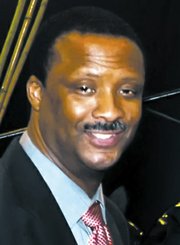By NEIL HARTNELL
Tribune Business Editor
nhartnell@tribunemedia.net
A “slight climb” in room rates enabled the Bahamian hotel industry to counter the 3.4 per cent decline in stopover arrivals during the 2013 first quarter, the Bahamas Hotel and Tourism Association’s (BHTA) president said yesterday.
Stuart Bowe, in a series of replies to Tribune Business’s questions, said the increased room rates had addressed a “great concern” for the sector over the past few years, and this trend was set to continue over the next few months.
“While we were hoping for stronger overall first quarter destination results, we are pleased to see an 8.4 per cent increase in stopovers to the Family Islands,” Mr Bowe said.
“There were also [other] bright spots. Throughout the Bahamas we saw room rates climb slightly. This helped to counter the stopover arrival decline.
“Repressed room rates throughout the recession years has been a cause for great concern by our industry and we hope that the first quarter positive room rate trend continues for the balance of 2013.”
The Central Bank of the Bahamas’ report on monthly economic developments for March, as reported by Tribune Business on Monday, found that both New Providence and Grand Bahama suffered year-over-year declines in the key stopover visitor segment for the 2013 first quarter.
Still, Mr Bowe told Tribune Business that “the first quarter decline was consistent with industry expectations”.
He added: “Several external factors contributed to the decline in stopover visitor arrivals during the first quarter. During the January and February period, our major northeastern US market was still recovering from the severe impact of Hurricane Sandy.
“We also saw a softening of demand due to US consumer perceptions of the ‘fiscal cliff’ issue. Finally, there was one fewer business day this quarter due to the leap year, which contributed to the overall decline in stopovers to Nassau-Paradise Island.”
Looking ahead, Mr Bowe added: “We anticipate a similar pattern over the next several months, showing a slight decline in arrivals but a slight increase in room rates.
“The Nassau Paradise Island Promotion Board has undertaken a media advertising campaign, along with the Ministry of Tourism and several major resorts. Additionally, the air credit program has been extended, along with targeted promotional efforts for the Family Islands and Grand Bahama. Several major special events in April, May and June will contribute significantly to the second quarter performance.”
And, exuding further confidence about the near-term outlook for the Nassau/Paradise Island resort industry, Mr Bowe said: “We expect to outperform 2009-2011 and show slightly higher overall results than 2012.”
The Central Bank said that while total visitor arrivals grew by 3.3 per cent to 1.75 million for the first three months of 2013, this resulted entirely from an increase in cruise passengers and other seaborne tourists.
While the increase in cruise visitors is welcome, their per capita spending - especially in Nassau and Freeport - is in the high two to low three figures. In contrast, land-based stopover visitors typically spend more than $1,000 per head, and their business is responsible for maintaining the hotel industry as the Bahamas’ largest private sector employer.
“Preliminary data from the Ministry of Tourism showed growth in tourist arrivals of 3.3 per cent during the first quarter, to 1.75 million, down from the 10.4 per cent advance reported a year ago,” the Central Bank report said.
“Sea visitors rose by 5 per cent. However, the high value-added air segment fell by 3.4 per cent.”
The report added: “In terms of the major markets, visitors to New Providence increased by 9.8 per cent, as growth in sea passengers of 15.6 per cent outpaced a 3.7 [per cent contraction in air tourists.
“The arrivals count to Grand Bahama decreased by 5.8 per cent, owing to reductions in both the air and sea components, by 19.1 per cent and 3.6 per cent, respectively. Similarly, visitors to the Family Islands decreased by 3.8 per cent, with the 5 per cent fall-off in the dominant sea segment countering the 8.4 per cent gain in air passengers.”
The Central Bank said the tourism industry “softness” meant that the Bahamian economy was “somewhat flat” in March, although foreign direct investment (FDI) led construction activity was described as “stable”.





Comments
Use the comment form below to begin a discussion about this content.
Sign in to comment
Or login with:
OpenID